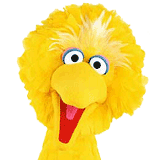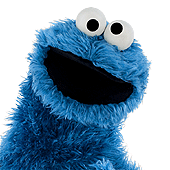Frank Oz
Published at 12:01AM, November 24 2012
As Imagination Illustrated is released, Frank Oz recalls how Jim Henson’s studio was a whirlwind of creativity, practical jokes and Muppets
On Jim’s desk, on the counter, on the worktable, scattered on the floor, tacked up on the walls — those were the last places I saw many of the sketches and ideas that are now seen here in Imagination Illustrated. The book, compiled by Karen Falk from the Jim Henson Workshop archives, adapts the diary that Jim kept throughout his career. There is too a trove of little-seen visual material, rare sketches, personal and production photographs, storyboards, doodles and much more, many of which have never been seen before.
It was on 53rd Street and 2nd Avenue where the first New York City Muppets Studio would be. It was only two cramped rooms, one flight up, where Jim, Don Sahlin (the Muppets’ puppet builder), Jerry Juhl, (the Muppets’ writer) and I (the Muppets’ performer), worked.
In the front room, there was the counter where I would practise lip syncing day after day with a Muppet character; where Jerry would have his small desk pushed up against the wall working on Muppet scripts, writing and rewriting and rewriting; where Jim would lie almost horizontal in his beloved Eames chair as he read and created while his long legs stretched out so his feet could rest on his teak desk. The second room was the workshop where Don would work on making the Muppets and creating the special effects. These were the two rooms in which the drawings and ideas would be scattered around as we worked. The work was often uncomfortable, painful, exhausting, and intense. But we still had fun. Those two rooms in which we worked were also where we played.
Don would have a small toy mouse and pull it along to scare the secretary. In his workshop Don would create some frightening creature and place it in the bathroom to scare Jim when he was working late at night. This is where we played darts. This is where the large moose-head lamp would light the room. This is where Jim’s tongue-in-cheek Shrine to the Almighty Dollar that he made would hang above the multicoloured couch.
We would eventually expand to include the two small rooms a flight above us. The work, and of course the play, followed along. These two new rooms were where Don would set off small explosions to annoy us; where I put Jell-O in Jerry Juhl’s desk drawers; where Don would lower an African mask on to the patio below while Jim was having a serious meeting. The play did not stop when we worked. The play was work. The work was play. And it was the play that created the work that you see in this book.
There was always a new idea Jim had: something else to be excited about. That is one of the great things about the form this book takes. The pieces of paper in the book are often overlapped: photos overlapping scripts; character ideas overlapping storyboards, ideas overlapping ideas. That’s how Jim’s mind worked. It wasn’t linear. He didn’t do one project and then do another and afterwards do another and another. His ideas were constant and overlapping. Ideas and projects overlapping each other like the pieces of paper overlap in this book. His was not an imagination that he would turn on and off. There was no handle on the tap. It kept flowing. No idea was impossible. He never gave a glance towards limitations. He went forward and made the impossible happen.
The cramped, two-room railroad flat was imagination. Imagination was still there when we expanded to the two new rooms above. It still was when we moved to larger quarters on 67th Street. It was still there when we moved to an even larger building on 69th Street. Imagination was always there; always where Jim was. Eventually those two small rooms one flight up on 53rd Street with all the drawings and ideas ended up being three large areas in New York, London and Los Angeles.
Those pieces of paper had on them Jim’s ideas for projects, television commercials, short films, feature movies, musical numbers, television appearances, new characters, scripts, a Broadway show. Every day they were part of our working process. They were around. Just always around. They were the ideas that would lead from Sam and Friends to the characters of Sesame Street, from the first sketches of Kermit the Frog to the success of The Muppet Show; from Fozzie Bear to Fraggle Rock, The Storyteller and The Muppet Christmas Carol. Ideas that inhabited Jim’s imagination — but then would go on to feature in the imaginations of a generation raised on his vision, his energy. It’s now, so many years later, I can see how unique they were. I can appreciate something now that I didn’t then; that everything Jim touched had an originality and aliveness ... and a genius. And it’s very gratifying to see that those pieces of paper were kept and how they and Jim’s spirit are captured in this wonderful new book.
Frank Oz was one of the collaborators responsible for the development of The Muppets and performed Fozzie Bear, Miss Piggy, Animal, Cookie Monster, Bert and Grover. His work as a director includes Dirty Rotten Soundrels, Bowfinger and Death at a Funeral. He is the voice of Yoda in the Star Wars films

 Welcome to the Muppet Central Forum!
Welcome to the Muppet Central Forum!.jpg) Christmas Music
Christmas Music Macy's Thanksgiving Parade
Macy's Thanksgiving Parade Sesame Street debuts on Netflix
Sesame Street debuts on Netflix Back to the Rock Season 2
Back to the Rock Season 2 Sam and Friends Book
Sam and Friends Book Jim Henson Idea Man
Jim Henson Idea Man Bear arrives on Disney+
Bear arrives on Disney+ I just remembered, during the aftermath of the Huricane Sandy when having no power, I meet someone in my neighborhood who used to have a restaurant that was right next to Jim's old New York building. I think he said something about being downstairs or something like that. He told me that he never meet Jim but I think he mentioned that he knew that there would be periods when he wasn't there. I just remembered this so I figure I just add that thought to this. Even though Frank is busy, I always love it when he takes the time to talk about his many exiting years working for Jim. I loved also just how they talked about how much they played while they worked. That's how "Termite Terrace" was. For anyone who doesn't recognize this name "Termite Terrace", this was the original Looney Tunes studio and the animators would prank on each other all the time. Always sort of roughly. lol And even AKA Cartoon Inc. where Ed Edd N Eddy was made, the animators had Sock em Bumper Fights during their breaks. Just listening to all these wonderful stories reminds me, Yeah this is the job for me
I just remembered, during the aftermath of the Huricane Sandy when having no power, I meet someone in my neighborhood who used to have a restaurant that was right next to Jim's old New York building. I think he said something about being downstairs or something like that. He told me that he never meet Jim but I think he mentioned that he knew that there would be periods when he wasn't there. I just remembered this so I figure I just add that thought to this. Even though Frank is busy, I always love it when he takes the time to talk about his many exiting years working for Jim. I loved also just how they talked about how much they played while they worked. That's how "Termite Terrace" was. For anyone who doesn't recognize this name "Termite Terrace", this was the original Looney Tunes studio and the animators would prank on each other all the time. Always sort of roughly. lol And even AKA Cartoon Inc. where Ed Edd N Eddy was made, the animators had Sock em Bumper Fights during their breaks. Just listening to all these wonderful stories reminds me, Yeah this is the job for me